What About Guns?
Hunters, range shooters, collectors – they’re part of rural culture. But with gun violence making headlines, gun enthusiasts are mostly choosing to lie low, and some residents are wondering how safe our countryside really is. Anthony Jenkins decided to find out.
Happiness is a warm bed.
Or so I felt early one Sunday morning in March as I pushed back the covers and prepared to brave icy roads to visit the Gun & Militaria Show at the Orangeville Fairgrounds.
The day before the show, hundreds of thousands of people had converged on Washington for the March for Our Lives. Hundreds of thousands more had marched in sister rallies at more than 800 locations in the United States, Canada and elsewhere. They were demanding tighter gun controls after the school shooting that took 17 lives in Parkland, Florida. Earlier the same week, the Canadian government had introduced Bill C-71 to tighten gun control in this country.
For better or worse, guns are in the news. Like many Canadians, I tend to feel pretty smug about gun-related violence in this country relative to that of our American neighbours. The U.S. has nearly 10 times the population of Canada, but at least 50 times the number of gun-related homicides.
According to the RCMP’s 2016 firearms report, nearly 581,500 Ontarians held firearm licences in 2016. Although I’m not a gun owner, I was curious to learn more about our own gun culture and why the gun show I was headed toward on a frigid March morning is so popular the fairgrounds hosts six of them every year.
Diehard enthusiasts were already lined up at the door for the show’s 7:30 a.m. opening. By 9, the parking lot was jammed, and the trucks of hunters, collectors and range shooters overflowed onto the frozen verges of Mono’s Five Sideroad.
General admission to the show was $5, and despite the encouragement of a “Ladies Free” sign at the door, attendance was overwhelmingly male. Inside the exhibit hall, throngs of men in ball caps and wet boots held paper cups of steaming coffee and wandered, enthralled, among 830 tables of mostly guns. Decoy ducks, army surplus gear, thermal underwear, medals, books and edged weapons (bayonets, swords, axes, knives) were on offer, but otherwise, it was wall-to-wall guns, many of them iconic brands such as Winchester, Lee-Enfield and Browning.
Only these are not actually “guns,” according to Lawrence Nabozniak. “Guns are artillery. Ships have guns. These are firearms,” he said. Nicely. As a hunter, he values precision, and as a gun collector, he admires it. A firearms enthusiast (he will tolerate “gun nut” only among like-minded friends), the Toronto resident has manned a regular table at the Orangeville gun shows for decades.
A retired cabinetmaker, the genial and well-spoken Nabozniak has owned firearms since he was 16. “I love precision. The old-world craftsmanship. The wood-to-metal fit,” he said, admiring details on a vintage BSA Lee-Enfield No.1 Mark III rifle issued to Canadian servicemen in World War I. He considers how the serial numbers on barrel, bolt and breech match, showing the weapon is original, not reassembled from parts. He appreciates the beauty of its intact unit identity disc and the precisely etched range gradients on the rear sight. Is it art? “It can be,” he said.
The self-defence defence
A few weeks earlier, my curiosity had taken me to a gun show in Hamburg, New York, only a 2.5-hour drive from here, but a world away in terms of lethal-weapon mentality. There, amid an astonishing array of handguns, I chatted with Martin Henneman, who stands six foot four, weighs a well-muscled 300-plus pounds and carries a concealed Glock .42 pistol. That sounds scary, but like Nabozniak, Henneman is a soft-spoken man who smiles as he describes himself as “an average American.” The former Pennsylvania state trooper now makes his living as an “armourer” and firearms trainer, and, he said, “Business is growing.”
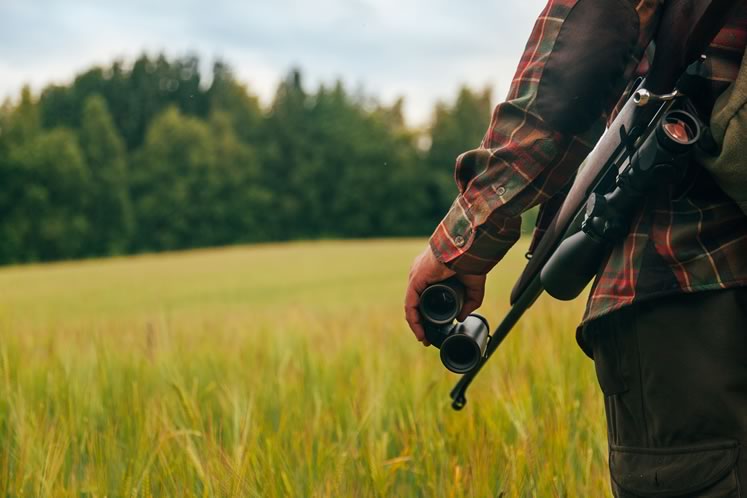
A hunter takes to the field with a bolt-action rifle, commonly used for hunting deer and moose. Photo by Visualspace | istockphoto.
A National Rifle Association member and a firm believer in the U.S. Constitution’s Second Amendment right to bear arms, Henneman views Canada’s lack of similar rights as a weakness, a surrendering of liberty. “You are servants of the government,” he said. “We are not.”
“I have the ability to defend myself,” he added firmly. “I’m not crazy. I’m not going to hurt anyone … I’ve been carrying a gun since I was 18 years old. I’ve never shot anybody.”
Henneman has visited Canada to hunt and likes our country. Asked how he would view his counterpart here – a very big, very broad, ex-cop, family man and business owner, but one who walks out his front door every morning unarmed – he didn’t hesitate: “A sheep.”
Then he posed a question of his own. “You’re unarmed. A criminal has a knife or is beating on you with a baseball bat. What are you gonna do?”
The question may have been rhetorical for Henneman, but when I ask Orangeville constable Scott Davis if he agrees with the NRA that an armed citizen in his or her own home is the best “first responder,” his answer is nuanced. “We all have to work together, but that doesn’t mean everybody has to carry a firearm,” he says. “Police officers are trained and authorized to carry a firearm and use it, if necessary. The public isn’t.”
Davis and his colleagues carry a .40 calibre Smith & Wesson handgun on their hip, and a Colt Canada C8 carbine is locked in a gun mount between the seats of their cruisers. But their firearms are seldom used. In 2017, for example, Orangeville police officers drew and pointed (“presented”) their pistols twice. On neither occasion was the gun discharged.
Constable Paul Nancekivell of the OPP’s Dufferin detachment is adamant the community is well protected. “We know our communities,” he says. “We’re out patrolling and have a very good knowledge of so-called bad guys. If we feel there is a problem, we make application to take their firearms away. If it is in the interest of public safety, we can seize those firearms. We both serve and protect.”
Most rural firearms-related incidents involve people reporting the sound of gun shots from hunters or others legally discharging firearms on private property, according to Caledon and Dufferin OPP.
The majority of firearms charges laid are due to unsafe storage and unauthorized possession. In each of Caledon and Dufferin in recent years, there have been from three to nine such charges annually. (Gun amnesty programs are held yearly to allow owners with lapsed licences to surrender legal firearms safely.)
In Orangeville, a handful of violent incidents have occurred in the last two years, including armed robberies. In November 2017, attempted murder was among charges laid after a man in his 50s was shot in the back (he made a full recovery), and this past May, weapons charges were laid connected to a man pointing a firearm at a woman.
Machines to kill?
Though Lawrence Nabozniak can appreciate his well-crafted Lee-Enfield as art, does he agree its primary purpose is to kill? “No,” he said after a pause. “No. A firearm is designed to throw a projectile. Nothing more. I don’t like sophistry. They are tools. How they are used, or abused, is up to the individual.”
With customary good grace, he launched into an analogy much loved by firearm owners: the lethal potential of another tool, the automobile.
“Let me ask you two questions,” said Nabozniak. “Do you imbibe alcohol or are you a teetotaller? And do you have a driver’s licence? If the answer to both is yes, I say you have the potential to be a drunk driver. I didn’t say you are, but by your own admission, you have the possibility to be. I accord you the presumption of maturity, intelligence and civic responsibility that you won’t be a drunk driver. Why do people not accord me [and other lawful firearm owners] the same courtesy?”
In fact, the U.S. has made a well-documented effort over recent decades to regulate automobile and highway safety, and for the most part traffic fatalities have declined significantly. But the country has made no similar investment in firearm regulation and safety.
Nabozniak’s car analogy carries more weight in Canada where, like autos, firearms are strictly regulated. Adults here can drink and drive, though not concurrently, but we have no inalienable right to bear arms. The ownership and use of a firearm is deemed a privilege and one not easily or expeditiously afforded.
Buying firearms in Canada
In general, to buy a non-restricted firearm, a category that includes ordinary rifles and shotguns, and to purchase ammunition, you must be at least 18 and take the Canadian Firearms Safety Course from a certified instructor. Courses usually last a weekend and focus heavily on safely handling a range of firearms. Having passed written and practical exams, you must then submit a detailed application for a PAL, a possession and acquisition licence, to the RCMP’s Canadian Firearms Program. The application requires you to list two references and to outline your personal history, including your conjugal and criminal history, over the previous five years.
Young people aged 12 to 17 can also access firearms by taking and passing the safety course and obtaining a minor’s licence. This enables them to borrow a non-restricted weapon for hunting or target shooting under the supervision of a licensed adult. Exceptions for those who need to hunt or trap to help support their family can lower the legal age even further.
To buy and possess a restricted firearm, which includes non-prohibited handguns and certain semi-automatic rifles and shotguns, you must take and pass an additional safety course and apply to change your PAL.
In Canada, most of the controversial military-style assault weapons used in so many of the American mass shootings fall into the prohibited class, except under very specific circumstances in which strict rules and licensing conditions apply.
Purchasing a firearm for personal protection, the rationale and constitutional right of American Martin Henneman, is not considered a valid reason for gun ownership in Canada and raises a red flag – as do a criminal record, a history of depression or mental health issues, and a recent divorce or job loss. The background check can take months.
If your PAL application is successful, the licence must be renewed every five years and your background will be checked regularly in a computerized process called “continuous eligibility.”
PAL in hand, you can’t just walk into an Orangeville Gun & Militaria Show and walk out with a restricted firearm, as you would to buy a loaf of bread from a convenience store. Handgun permits, for example, limit transport and use to ranges or shooting competitions. Should a vendor holding a firearms business licence have a handgun you feel is perfect for your licence level, needs and budget, you must place a deposit on the “weapon” (a term disliked by some firearm dealers and owners because of its negative connotations), fill out the paperwork required by the CFP, and await permission to transfer ownership and possession.
Restrictions are less onerous if you buy a non-restricted firearm, but you are still bound by the “laws of safe transport,” which allow you to carry a legal firearm, unloaded and in a case, to a vehicle and take it home. There, it must be stored securely (in a locked cabinet or trunk) and be in your “personal care and control” when it is not. You can’t just leave it on the coffee table or lend it to the neighbour who wants to shoot a pesky skunk.
Debate over tighter gun controls
Mandatory record keeping and a national gun registry were scrapped by the Harper government in 2012, but Justin Trudeau’s Liberal government has introduced Bill C-71, which proposes to tighten controls. The bill calls for enhanced RCMP background checks that examine an applicant’s entire life history, rather than limiting the check to the previous five years. It also requires firearm vendors to document inventories and sales for a 20-year period. These records would be accessible to police with a warrant.
The new bill faces opposition and has yet to pass. In a news release, David Tilson, Conservative MP for Dufferin-Caledon, said, “The Liberal government cannot be trusted when it comes to firearm legislation because they fail to tackle criminals who use guns to commit violent crime, while treating law-abiding firearms owners as criminals.”
The National Firearms Association, which claims to represent 70,000 members, is also vehemently opposed to Bill C-71, citing unnecessary prohibitions and increased paperwork. Describing the proposed legislation as “misguided” and “an all-out attack on firearm owners and users,” the group maintains the bill aims to restore the national long-gun registry, though in a different guise.
Hunting on public lands
Armed with a PAL and a gun, you can’t just step out the door and start firing. In addition to keeping up with the paperwork involved in gun ownership, firearm owners must abide by federal and provincial regulations and municipal bylaws. It’s a complex patchwork of overlapping jurisdictions [see sidebar, below] that is complicated for hunters, and even more so for uninitiated citizens who want to feel confident about who might be shooting at what, where and when.
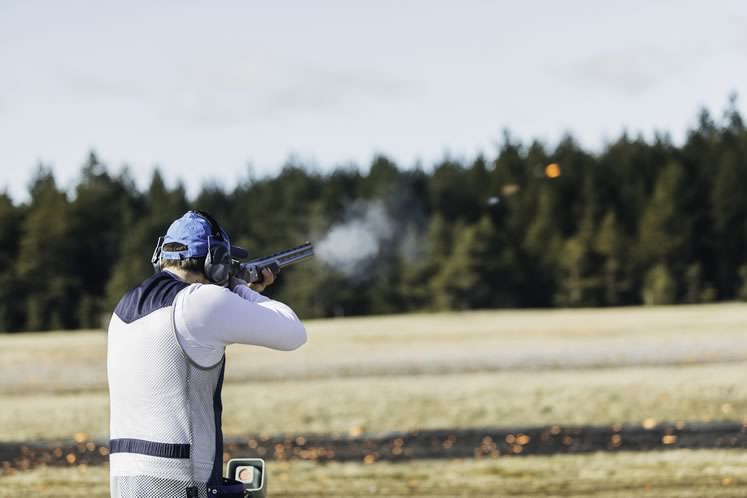
A trap shooter tests his skills with a 12-gauge pump-action shotgun. Photo by Visualspace | istockphoto.
The Dufferin County Forest, for example, comprises 2,606 acres spread over 13 separate tracts. These are beautiful, natural places to walk dogs, hike, mountain bike, birdwatch – or hunt. During hunting seasons, the unarmed share some designated forest tracts with armed hunters who hold a PAL and a licence to hunt specific game.
Rules governing this shared use are determined and overseen by Dufferin County council. Warden Paul Mills views the shared use of “the jewels of our county” as a privilege, not a right, and says user groups must respect one another’s use of the forest.
Sometimes they don’t, or don’t see why they should. “We do have pushback. People have to get along,” said Mills. He cited the Ontario Ministry of Natural Resources and Forestry’s administration of shared-use lands in north Simcoe County, where groups weren’t getting along. According to Mills, “The ministry said, ‘Get along, or there is a simple solution. It’s going to be closed to all.’”
Caroline Mach is Dufferin County Forest manager. Does she see a problem with shared use? “We warn people that hunting is happening – signs, advertising in the newspaper, and on our website.” But, she acknowledged, “The DCF is 2,600 acres. That’s a large area to keep people out of.”
Hunting is prohibited everywhere in the forest from June 1 to September 30. But during the rest of the year, are authorities taking sufficient precautions to keep all forest users safe? “I guess that’s a question everyone has to decide for themselves,” Mach said. “We suggest people may not want to go at that time of year, or if they do, they wear bright-coloured clothing. We do have tracts that do not permit hunting, so there is an option to go there. Are we doing enough to let people know what’s going on? It seems to me we are.”
When hunters and non-hunters conflict
The story of Marianne Schmid is a tragic example of what can happen when the interests of hunters and non-hunters collide. In the fall of 2006, Schmid was walking in the Simcoe County Forest during deer-hunting season. She was dressed in a red sweater and wearing headphones. She was shot and killed by a hunter, who was tried for manslaughter and acquitted in 2009.
More than a decade after the shooting, Marianne’s good friend Sandra Proudfoot of Mono remains saddened and outraged by the incident. Proudfoot spoke out to politicians and wrote letters asking for more local control over where hunters can operate in Mono during the annual 10-day period when deer hunting with guns is permitted. Nothing happened. What’s more, she felt hostility from gun groups. “The chap that used to clear our driveway stopped coming. He’s a farmer and he needed his gun.”
A quilter, Proudfoot channelled some of her frustration into a stunning quilt she created as a memorial to the victims of the 2012 Sandy Hook Elementary School shooting in the U.S., where 20 six- and seven-year-olds and six adults were gunned down.
Surprisingly, despite her grief and dissent, Proudfoot is not opposed to hunting. “I couldn’t do it myself, but the farmers need their guns,” she said. “I fully support that.”
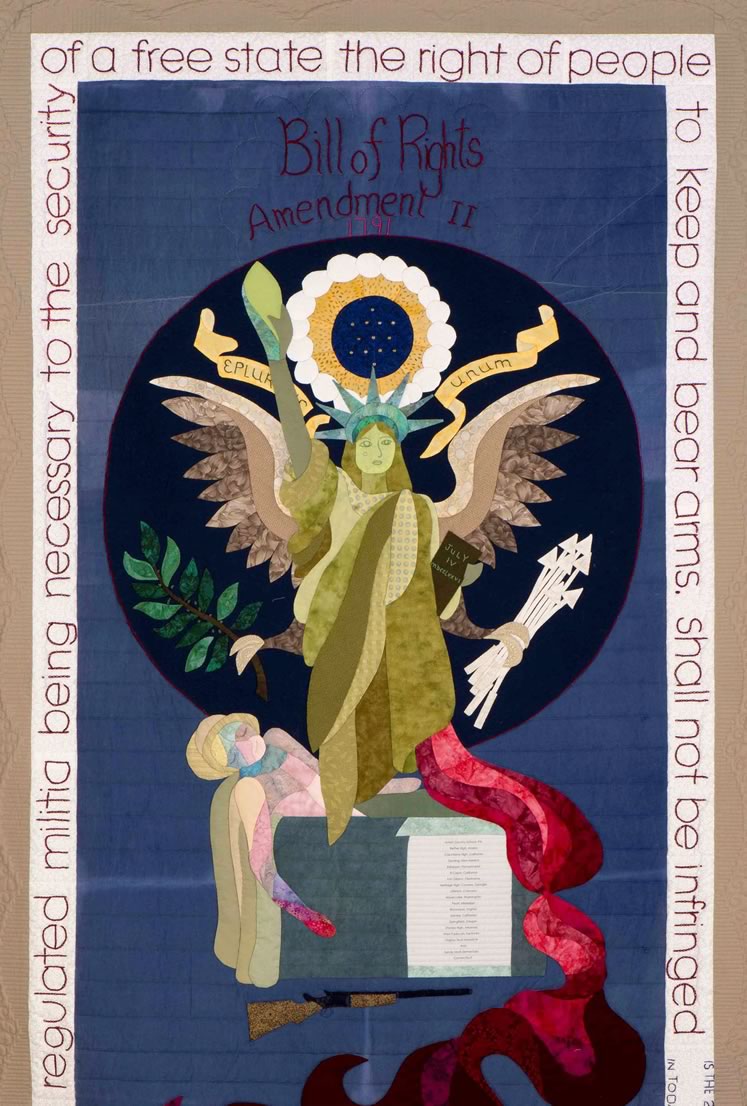
Detail of a quilt created by Mono’s Sandra Proudfoot in memory of the 20 young schoolchildren and six adults shot and killed at Sandy Hook Elementary School in Newtown, Connecticut in 2012.
Proudfoot’s primary concern remains licensed hunters, in season, trespassing on her land and that of her neighbours. “This is a rural-residential area,” she said. “It’s not safe during hunting season. People come to this area to hunt deer because they don’t have to go far and pay for an overnight stay. I suggest that hunters hunt in designated areas instead of having the run of the whole township.”
What is trespass?
Unfortunately, what constitutes trespassing is a puzzling intersection of rules and ethics. To hunt on private property, hunters must have the landowner’s permission. Responsible hunters understand the rules and should know where property lines are. A rare simple passage from Ontario’s convoluted Trespass to Property Act states, “Entry on premises may be prohibited by notice to that effect.” Meaning the onus seems to be on landowners to make it clear hunting on their property is prohibited. According to the act, they can do this by:
- issuing oral or written notice – to whom is not specified.
- fencing – enclosing the property “in a manner that indicates the occupier’s intention to keep persons off the premises, or to keep animals on the premises.”
- posting signs – “clearly visible in daylight … from the approach to each ordinary point of access.”
- marking – as “set out in Section 7. R.S.O. 1990, c. T.21, s. 5 (1).” Meaning yellow or red dots “of such a size that a circle of ten centimetres in diameter can be contained wholly within it.” Dots on what, and how many, goes unspecified.
Got it?
Hunters who trespass, either willfully or unknowingly, can be arrested by the police, or a property owner, without a warrant. Or by someone such as Rick Williams, acting area enforcement manager for the Ministry of Natural Resources and Forestry’s Aurora District, which includes Caledon.
Williams’ area of jurisdiction is vast, wooded and difficult to monitor. Hunters move. Property lines may not be clear. According to Williams, “Someone coming from outside the property should be able to see a dot. If nothing is clearly marked and someone crosses the line, that is a mistake. [The hunter] hasn’t done it on purpose as far as I would know. It wasn’t marked.”
So the responsibility is on property owners to mark land prohibiting trespassers and hunters? “It works both ways,” said Williams. “You are the one controlling your property. It’s a matter of hunter ethics. I can’t be holding everyone’s hand out in the bush carrying a firearm.”
Respect for firearms
It’s difficult to imagine anyone holding Dale Krushel’s hand in the bush. As manager of the trap shooting range for the Dufferin Northern Peel Anglers and Hunters Association, he stresses conservation, land and wildlife management and, above all, safe and responsible firearm use.
Established in the 1930s, the club currently boasts up to 350 members and offers ranges for archery, handgun, rifle and trap on 125 acres just north of Orangeville. The group describes itself as conservation-minded and works with groups such as Boy Scouts and Friends of Island Lake to safeguard the natural environment.
Krushel and his peers are bothered by the increasing hardening of public attitudes toward firearms and firearm owners, particularly among urbanites. “They are exposed to [gun violence] on TV and video games, and it doesn’t represent reality,” Krushel said. “The value of life is being minimized. So when we get the opportunity to emphasize respect for the firearm, we take it. It’s just not ‘Bang! Bang! You’re dead.’”
People’s fear and condemnation of firearms often arise from ignorance about how firearms are to be handled, he said. “The ability to handle things properly and what needs to be respected is part of what we [in the club] do,” he added. “We do things a little quietly because the current attitude isn’t particularly favourable. It is the criminal element that paints us all with a broad brush. We are legal, law-abiding citizens who happen to enjoy sports that involve firearms.”
Preparing for the worst
Krushel’s words are reassuring, but the Parkland shooting in the news the day I attended Orangeville’s gun show was followed just three months later with 10 more dead at a school in Santa Fe, Texas, the latest in a stupefyingly long list of similar tragedies. As of mid-May, school shootings in the U.S. had taken place this year at an average of one a week. Little wonder parents north of the border are also driven to wonder if local schools are prepared for such an unspeakable scenario.
School shootings are rare in Canada, but in 1975, the Peel District School Board, which includes Caledon, experienced this country’s second worst (after École Polytechnique in Montreal) at Brampton Centennial Secondary School. An otherwise unremarkable 16-year-old boy, thought to be disgruntled with the school system and specific teachers, smuggled two rifles into the school in a guitar case. He killed two and wounded 13 before killing himself.
Since then, the Peel board, along with the Upper Grand and the Dufferin-Peel Catholic boards, have implemented emergency response plans, which are regularly reviewed and updated in consultation with local police services.
The boards have also adopted lockdown procedures to keep schools safe during potentially serious incidents. In addition to the fire drills we all remember from our own school days, regular lockdown drills are now a feature of school life, and the boards have upgraded school cameras, security and emergency mass notification systems.
In March, a 16-year-old student who took an imitation firearm to Erin District High School was charged with carrying a concealed weapon, as well as possession of a weapon for dangerous purposes, among other offences.
The youth’s reason for carrying the weapon was not reported, but the sanctions reflect zero tolerance – and penalties can be severe. An adult convicted of carrying a concealed weapon faces a $5,000 fine and a prison sentence of between six months and five years. Possessing a weapon, real or imitation, for dangerous purposes can land someone in prison for up to 10 years. A conviction involving a firearm can also jeopardize a person’s ability to travel to the U.S.
Young and responsible
At this past January’s iteration of the Orangeville gun show, a fresh-faced electrical engineering student, not long out of high school himself, grabbed one of the last spots in the fairgrounds parking lot. Recently granted a PAL, the novice collector had driven some distance from university through a snowstorm to be there. The historical significance and technical ingenuity of older firearms appeal to him. In addition to a couple of rifles, he had also acquired the pervasive wariness of many veteran gun owners – he asked to not be identified.
The young man’s primary interest is target shooting. “I don’t see the purpose of hunting for sport,” he said, calling the killing of animals an ethical barrier he doesn’t wish to breach.
As a thoughtful and conscientious firearm owner, he is sensitive to current attitudes toward guns and school shootings in the U.S. and how easily obtained illegal weaponry smuggled in from the U.S. undermines Canada’s regulatory efforts. Though the number of firearms successfully smuggled across the border is unknown, a report by the Canada Border Services Agency shows that, between 2011 and 2016, agents seized an average of 569 guns a year. Not all were being smuggled with criminal intent; some were seized from U.S. visitors who didn’t understand that permission is required to bring a gun across the border, nor that a gun that is legal in the States may be illegal in Canada.
“Without proper responsibility and legislation guns can be deadly,” the young man said. “I think Canada has got it right. But with the current climate, the media is portraying the only quality of guns as the ability to kill. It’s a detriment to being a firearms owner. There is a stigma.”
There’s no question the stigma has made local firearm owners distrustful of publicity. The young man was not the only gun owner who wished not to be identified. The woman who runs the Orangeville shows, the biggest in southern Ontario, also wants to carry on under the radar. She requested her name not be used and the show not photographed or even mentioned in this article. “We always get a bad rap from the media,” she said.
Urban vs rural
Orangeville is considered the perfect central location, drawing urbanites from the GTA as well as firearm fanciers from across southern Ontario. According to the gun show organizer, before she refused further comment, holding a show in Toronto is too expensive and the interest isn’t there. Basically, gun shows are not wanted in the big city. This isn’t surprising, given the results of a recent poll conducted by EKOS Research Associates for The Canadian Press. EKOS reported that 69 per cent of those surveyed favoured a total ban on urban gun ownership. In Ontario, support for a ban was even higher at 74 per cent, and higher still in Quebec where 76 per cent endorsed a ban.
Nothing I heard in my travels has made me want to own a gun. But I have been persuaded that conscientious hunters, collectors, and trap and target shooters have valid views that can be respected and accommodated.
Happiness – for all of us – is a well-regulated gun.
(Editor’s note: The print version of this article misidentified the guns shown in the photos above. The information has been corrected here. We regret the error.)
Hunting rules unravelled… sort of
Hunting in Ontario, whether on private property or crown land, in a conservation area or a provincial park, is governed by an exasperating patchwork of regulations that can confound hunters and non-hunters alike. Some areas are open to licensed hunters. Some are not. To hunt on private property, hunters must have the landowner’s permission – but rules about licences and game tags, as well as what can be hunted where and how, still apply.
Provincial parks are covered by one set of rules. Conservation areas by another, and crown land by another. Hunting is prohibited in all Headwaters’ provincial parks, except the Pine River Provincial Fishing Area. And Credit Valley Conservation, for example, allows no hunting except in very specific and exceptional circumstances.
As for the Bruce Trail, it depends which part. The trail traverses private property, crown lands and provincial parks. Animals to hunt and times to kill? Check online to find the ownership and hunting designation of each trail segment. With some understatement, Staff Sergeant Rick Maw, enforcement manager for the Midhurst District of the Ministry of Natural Resources and Forestry, says, “It’s complicated.”
The municipalities of Headwaters fall into three separate MNRF districts. All of Dufferin County is in the Midhurst District, Caledon is in the Aurora District and Erin is under the jurisdiction of the Guelph District. Each district is further divided into what the ministry calls wildlife management units or WMUs. Because rules for hunting game vary from unit to unit, MNRF publishes an annual guide that summarizes the complex rules about when, where and how licensed hunters can operate.
WMU 80, for example, includes the Luther Marsh, which is administered by the Grand River Conservation Authority. Hunting with certain weapons is allowed in designated areas of the marsh every September through the following February, though specific dates during that period depend on the type of game a hunter is after: geese, waterfowl, deer, ruffed grouse, woodcock, or rabbits and hares. In addition to the necessary federal and provincial licences, hunters must apply for – and receive – a permit to hunt in the marsh and are required to abide by specific conditions (e.g., no dogs). When hunting is allowed, non-hunting areas of the marsh are closed to the public.
In Caledon, which is WMU 78D, a bylaw prohibits the discharge of any firearm – except by farmers whose land is zoned and used for agriculture and who need to deal with animals, such as coyotes, that threaten livestock. Even then, the type of firearm a farmer can use is strictly regulated. Gun owners can also use firearms at shooting ranges and clubs, provided the land is zoned for this use and the range or club meets provincial rules.
Caledon’s bylaw, however, does not completely prohibit hunting in the town. Deer, for example, can be hunted, but only with bows, only by town residents, only in season (October 1 to December 31), only on land zoned and used for agriculture, and only with the permission of the landowner.
Most of Mono, as well as all of Mulmur, is in WMU 81B. In this unit, for example, the spring wild turkey season is now over, but this year’s fall season runs from October 9 to 21 for hunters using guns. For bow hunters, the dates are slightly different. As in Caledon, the deer season starts October 1, but only for bow hunters. Shotguns and muzzle-loaders can be used to shoot deer for only 10 days, between November 5 and 9 and again from December 3 to 7 – but numbers are limited, and only licensed hunters who have taken part in a draw can legally participate. During the 10 days when hunting with guns is allowed, bow hunting is prohibited. During the rest of the season, which ends December 31, deer can be hunted only with bows.
On top of all this, hunting ducks and geese – and other migratory birds – is covered by federal law administered by Environment and Climate Change Canada. Which adds a whole new layer of requirements to the maze of regulations.
The 2018 MNRF guide to hunting regulations can be downloaded at ontario.ca/document/ontario-hunting-regulations-summary.
Related Stories
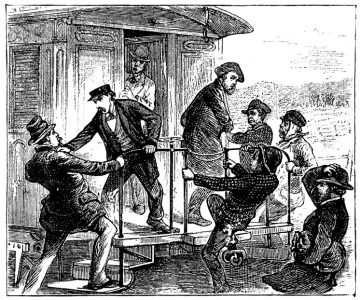
I am shot!
Jun 19, 2018 | | Historic HillsOn the platform of a local railway car, 23-year-old David Hunter was an innocent victim in a deadly chain of events that turned deadly one evening in 1872.
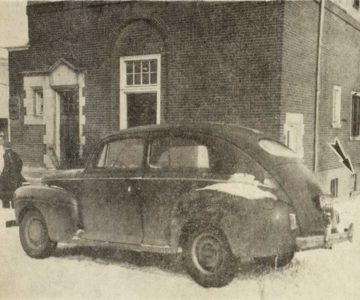
A Community Mourns
Sep 16, 2017 | | Historic HillsIn the winter of 1946 the people of Bolton were drawn together by an incident that began with all the ingredients of a grand farce, but ended in tragedy.
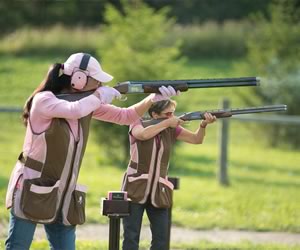
Ladies’ night out … with shotguns
Sep 13, 2012 | | Good SportI cracked the gun open and the empty shot popped out of the barrel in a small cloud of smoke.














Thank you for this informative article.
I would note that when the police opine that they are trained to use firearms safely, so are the concealed carriers in the USA trained to use theirs safely.
The two jobs are quite different, however,
The cop’s job is law enforcement and all it entails. This may include pursuing, apprehending and detaining people who may be violently uncooperative.
The CCWer’s job is to simply survive. This is best done by adopting a proactive, multilayered strategy of timely and effective personal defence.
The layers are: situational and self awareness, avoidance, de-escalation, escape and evasion, barricading, armed and unarmed physical fighting.
CCWers have shown themselves to be very capable applying these layers, and they are 1/3 as likely as a non CCWer and 1/2 as likely as a cop to ever be the perpetrator of illegal violence. Yes you heard that right. Non gun owners and cops murder, rap, rob and assault more often than do CCWers.
When our politicians like Holland and Goodall, egged on by traumatized victims like Cukier and Rathgen opine that gun owners are a societal risk, they have it exactly wrong.
We are the safest cultural subset in the country.
Best regards,
Michael Ackermann, MD from Sherbrooke, NS on Jun 23, 2018 at 12:04 pm |